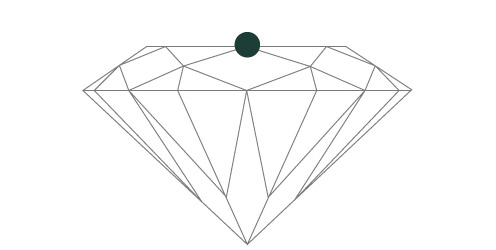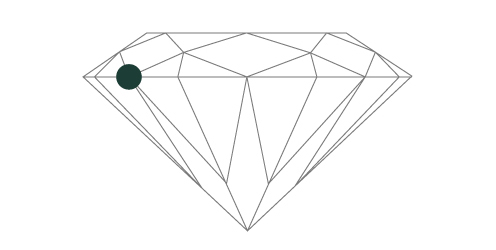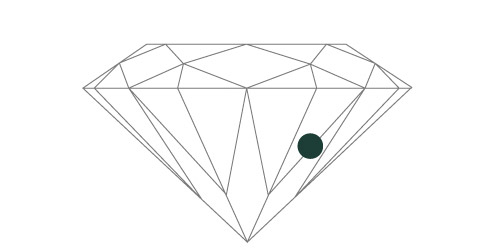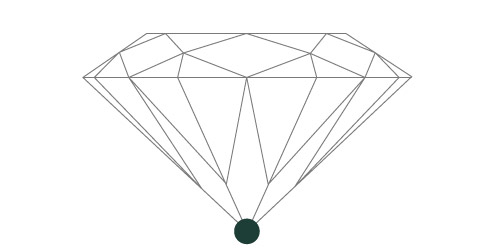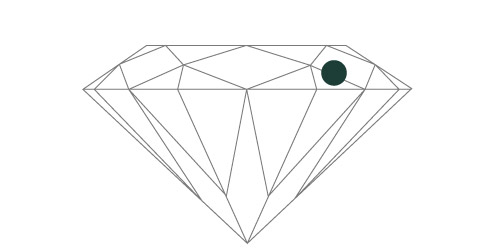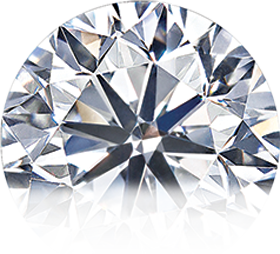
A diamond’s features are intrinsic in the stone, but the skill and precision of an expert cutter can significantly influence its value.
Weight is an indispensable element in evaluating a diamond and is measured in metric carats (ct): one carat corresponds to 1/5 of a gram (5 ct = 1 gram). The word Carat derives from the ancient custom of comparing diamonds to carob seeds, which were thought to have an exceptionally uniform weight. Although we have evolved since then, it is true that these seeds are all nearly identical in size, which is why they were chosen as a means of establishing value. For stones weighing less than one carat, the unit of measurement used is one hundredth of a carat, known as a point (e.g. 0.20 ct = 20 points).

The clarity of a diamond is evaluated based on the different inhomogeneities visible at 10x magnification, traces of non-crystallized carbon it contains (inclusions). Almost all diamonds have inclusions, which are known as “nature’s fingerprints”. These are seldom visible to the naked eye. By analysing the stones using 10X magnification, the experts can define the degree of clarity of every single diamond based on a set of international parameters. The lower the number of imperfections, the higher the clarity, making these stones extremely rare and expensive.


The greater the absence of colour, the higher the value of the diamond. However, totally colourless stones are very rare. Colour is classified using the letters of the alphabet, from D (colourless) to Z (light yellow colour). Diamonds can come in almost any colour as a result of flaws or structural defects; what makes them valuable is the absence of colour.


The term encompasses the entire process of transforming the rough stone into a finished diamond, and indicates the gem’s proportions. Nowadays, the cutter can determine the diamond’s angles, facets and proportions with extreme precision. The cut also determines the diamond’s capacity to reflect light and therefore its brightness. The cutter is instrumental in revealing the beauty concealed in the rough stone. Man has created different cuts to accentuate the diamond’s natural splendour. The most common is the round, “brilliant” cut, with 57 facets. The cut influences the appearance and attractiveness of the stone to the point of affecting its value. A diamond’s brightness is largely connected with the proportions between every facet of the stone: optimal proportions result in optimal radiance.


